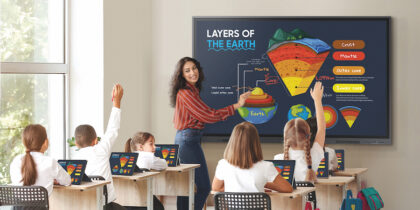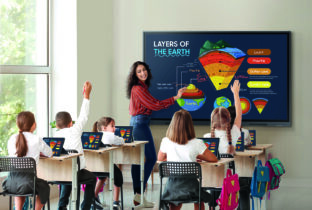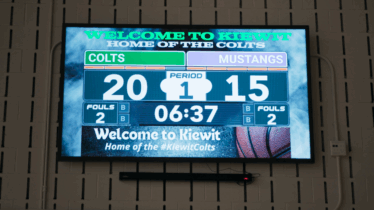| There’s no question that technology has changed the face and future of education, and these days, mobile technologies are taking the education experience beyond the classroom. In the right hands, technology can even transform the traditional field trip, creating a more interactive and memorable experience than ever before. “This is not your mother’s field trip,” says Ellen Paxton, a two-time national board certified teacher and founder of the Professional Learning Board, which provides online teacher and staff support to learning communities. “Today – and tomorrow’s – mobile technology can enhance the actual educational impact of the field trip through all phases of the learning experience.” Immersive Learning, Outside QR codes and augmented reality are the two main ways that in-person field trips will be enhanced. Students could either point their mobile devices at something of interest or scan a code beside it to find more information via video, text and audio. For example, students could explore beyond displays of art to find information about the history behind the piece, the artist’s background, and similar works. They could also watch a 3-D animated reenactment of a historical event playing on their screen as if it were happening in real time. “Increased engagement provides a stronger personal connection to the learning objective of the field trip,” Paxton says. “First-hand interactions are a great learning tool with the potential to bring alive the content in the way the traditional classroom text and lecture format simply can’t.”Teachers could then create lesson plans incorporating the field trip to encourage interactivity and student engagement, and create a broader learning impact.
You Are What You Wear As wearable technology becomes more common, field trip possibilities will only continue to expand. Students could bring their experiences from any outside discovery back to the classroom and connect them to lesson plans and small group learning, or share them on social media. For example, Samsung has partnered with Oculus Rift to build the Samsung Gear VR, a mobile virtual reality headset. Andrew Ko, vice president of education for Samsung, says the partnership provides many potential educational benefits. If used in the classroom, this technology could provide a hands-on experience for students, even when they are miles away. “It gives you a more immersive experience of being at the Grand Canyon, or underwater, or looking at skyscrapers,” Ko says. “It’s a much more experiential way of learning without having to physically be there. So it’s not just about getting in a textbook, but going into projects [students] can really relate to and can understand why they’re so important.” That means that in the future, not all field trips will have to be in person. New technology will erase the geographic limitations of the traditional field trip, opening up new adventures and turning them into hands-on experiences through virtual field trips. Emerging tools will allow students from across the globe to connect with one another; they could visit remote environments and previous time periods to enhance their understanding of other places and history. Ancient Greece won’t just be something that history students read about; they could explore it virtually and share the experience with students from all over the world. Adds Paxton, “With today’s technology, each student becomes a creator in their own experience – a co-creator of content, an interactive player in the experience of the location and/or time period.” Wearable technology can also be used in traditional field trip environments to add to the experience. Ko points to portable tech such as Samsung’s Gear smartwatches that come with built-in cameras. “[Students can] go out to the field and take pictures of the dandelion, or something like that for their biology class or their social studies,” he says. “If they’re in the Battlefield of Manassas, they can have all that [information] right there, readily available.” He says that being out of the classroom has always provided beneficial learning experiences, but new dimensions provided by technology will make them even more memorable. For more information on Samsung’s solutions, click here. Samsung BusinessVoice: Samsung BusinessVoice is our curated content hub on the Forbes BrandVoiceTM platform where this article originally appeared. Read more stories from Samsung BusinessVoice here. |







